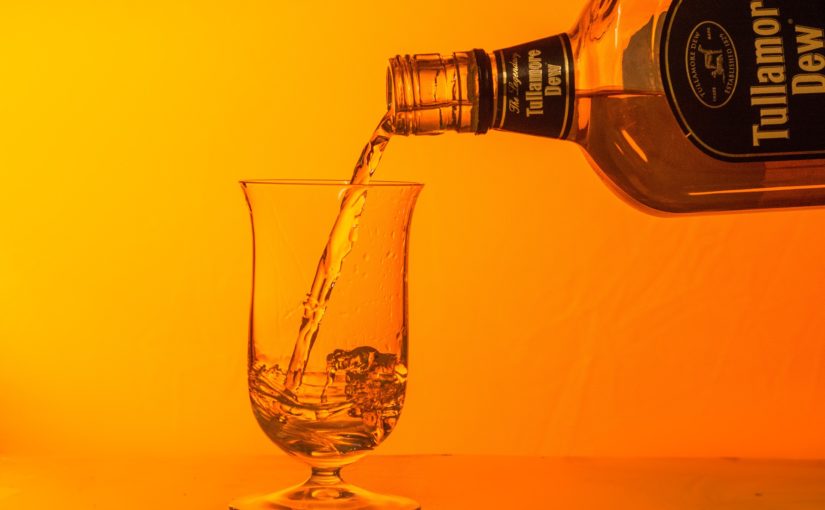You can increase the chance that you will be inspirational … that you will be persuasive … and that you will be fun … without changing one word of what you say.
Just add alcohol.
You’ll get better laughs at your jokes.
You’ll get stronger emotional reactions.
You’ll get higher sales conversions.
You’ll get higher averages.
You’ll sound more credible.
You’ll get better evaluations.
You’ll get more group participation.
BUT … I’m guessing an audience full of inebriated party animals would not be appropriate at < INSERT YOUR EVENT HERE>. How do you, as a public speaker or communicator, get the reduced inhibitions of intoxication without the downside of purposely drugging your audience?
All you have to do is understand a principle of human psychology called “Group Polarization.”
The “Wisdom” of the Crowd
 Have you ever seen a stand-up comedian on TV and thought “He’s not even funny?” Yet everybody in the club on TV is laughing!
Have you ever seen a stand-up comedian on TV and thought “He’s not even funny?” Yet everybody in the club on TV is laughing!
Have you ever watched a football game (or other sporting event) on TV by yourself? Do you stand up and scream at the TV? Do you yell at the refs as if they can hear you? Do you do the touchdown dance alone in your basement?
I confess, sometimes I do — and I don’t even drink.
 BUT, when you actually attend the football game IN THE STADIUM (with or without beer), you ALWAYS cheer the touchdown. You almost ALWAYS stand up when the wave in the crowd comes by. You almost ALWAYS boo the ref with the crowd at a bad call.
BUT, when you actually attend the football game IN THE STADIUM (with or without beer), you ALWAYS cheer the touchdown. You almost ALWAYS stand up when the wave in the crowd comes by. You almost ALWAYS boo the ref with the crowd at a bad call.
The biggest difference between your basement and the stadium is the size of the crowd. Big crowds produce extreme noise, extreme emotions, and extreme reactions. Small crowds (of one)–not so much.
Some sports fanatics, who seem perfectly normal at home on the couch, have, on occasion, even committed verbal and physical abuse of the opposing team and it’s fans when joining the crowd at a stadium.
It’s not the beer that makes you feel uninhibited in the stadium–it’s the crowd. You know this already, because you’ve seen in real life that it only takes a few friends watching the game in your TV room to bring out that inner stadium-fanatic.
In social psychology, this is called “Group Polarization.” Don’t worry about the academic terms, just remember:
People in groups make more extreme decisions
Every time you see a riot on the nightly news, you see group polarization at work. At home, an individual is merely irritated, but when several irritated people join together in a public protest, the madness gets more extreme and can result in riots, shootings, fire bombs, looting, etc.
The Polarization of Public Speaking
We know that group polarization is real, but how does it affect you when you’re giving a presentation? How can you use this knowledge to increase your public speaking skills?
First, understand what is happening.
If the majority of your audience already disagrees with you, then bringing them together in a group, will make their reactions more extreme–they’ll disagree with you more passionately, more vocally, and more viscerally!
On the other hand, if your audience already agrees with you, more or less, then the bigger the group, the more persuasive you will become–even if you use the same exact words.
If people already want to laugh, then putting them in a group will make them laugh louder, longer, and more often. That’s why the comedian is funnier in the club than in the living room. That … and the booze.
Think of the irony. Bigger audiences don’t necessarily prove that the speaker is more legitimate. Quite the opposite–bigger audiences make the con artist’s job easier!
Polarization Contagion
Psychologists have several theories on why group polarization occurs, but one thing is not disputed:
Emotions are contagious
 Yawns are contagious.
Yawns are contagious.
Laughs are contagious.
Depression is contagious.
Quiet is contagious.
Enthusiasm is contagious.
Persuasion is contagious.
Group Polarization basically works like this:
- Individual feelings are made more extreme.
- Those extreme emotions spread to others in the group.
- Other individual’s feelings are made more extreme.
- Repeat.
One way emotional contagion occurs is through a subconscious response in humans called “automatic mimicry.”
Even if we’re not trying, every human being subconsciously mimics the facial expressions, energy, and idiosyncrasies of those around us–especially when we share a common in-group identity. The more the crowd has in common, the more contagious the emotions will be.
If the beginning of your presentation is dominated by low energy silence, then that silence will spread. If the crowd experiences laughter from the beginning, the laughter will spread.
The sooner individuals in a crowd see other individuals acting the way you want, the sooner your desired response will spread. The longer it takes for the crowd to respond, the less likely they ever will respond.
In other words, you need to highlight the response you want. You need to draw attention to individuals in your audience who react the way you want the whole crowd to react.
Do politicians plant operatives in friendly crowds? YES.
Do politicians plant operatives in hostile crowds? YES.
A slimy, manipulative politician does this by talking to the plant. You can do this by directing your conversation and attention to individuals who are most likely to influence the group.
For example, if you want more energy in the audience, make eye contact with, and direct your comments to the person with the most energy. If you want more laughs, make eye contact with and direct your communication to the individual who is letting out the best chuckles. If you want less energy, empower the individuals in the audience who already have less energy.
You can make the emotions spread faster by making sure audience members can see each other, OR making sure they are in close enough proximity to each other to sense the emotions of others.
That’s why you see the people having the most fun projected on the jumbo-tron at political and sporting events, and why you see the most emotional believer on-screen at a faith-healer’s religious revival. The event organizers are trying to get the emotional contagion to spread.
That’s also why effective persuaders will pack you into a small room or make sure you are seated uncomfortably close to other people even when the room is big. Their just trying to make it easier for the emotional contagion.
Non-alcoholic Dis-inhibition
 Granted, this is much easier with a friendly audience than a contrary one, but the basic recipe is the same:
Granted, this is much easier with a friendly audience than a contrary one, but the basic recipe is the same:
- Make the crowd bigger.
- Show the crowd their similarity.
- Help the crowd see each other.
- Draw attention to the individuals who respond the way you want.
- Let the fun spread
Crowd-fun-ing. No alcohol required.

